Diamants, montures, bagues et types de bandes | Casting House
Diamants, montures, bagues et types de bandes
BAGUES ET BANDES
Il est utile de commencer par les bases de la joaillerie, à savoir les bagues et les anneaux. Cette partie du guide couvre les éléments standards de toutes les bagues, y compris les montures, les tiges et les styles de galerie.
ANATOMIE D'UNE BAGUE
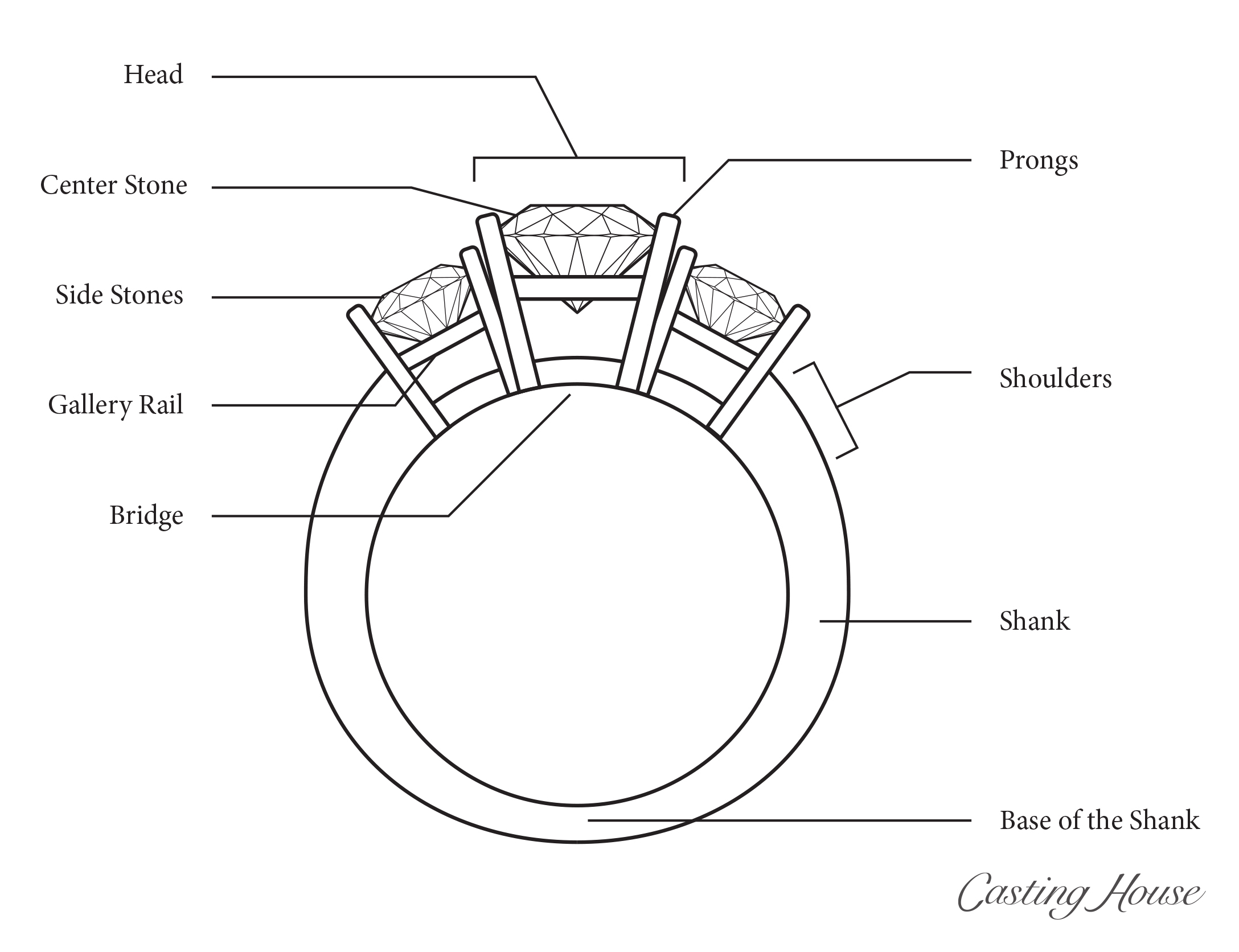
En regardant la bague de côté et en commençant par le haut, de nombreuses bagues comportent une pierre centrale maintenue par un sertissage souvent appelé la « tête » de la bague. La pierre centrale, qui peut être un diamant ou tout autre type de pierre précieuse, peut être accompagnée de pierres latérales. Toutes sont maintenues dans le sertissage par des griffes métalliques qui maintiennent délicatement mais solidement les diamants et les pierres précieuses. Il existe différents types de griffes et d'autres styles de sertissage qui sont également utilisés pour maintenir les pierres, comme les chatons (voir Sertissures centrales).
Les diamants ou pierres précieuses représentés ici sont sertis de griffes et disposent d'un rail de galerie qui permet de maintenir les griffes en place, situé à peu près à mi-chemin entre le haut de la pierre et le rail de la bague, ou le pont. La base de la tige est opposée à la pierre centrale - ou à la tête de la bague - et lorsque la tige monte vers le haut de la bague et ses montures, elle peut changer de profondeur ou de largeur et être appelée « épaulements ». Selon la conception de la bague, la zone d'épaulement peut se rétrécir, s'élargir, se fendre, se former en cathédrale ou prendre un certain nombre de formes différentes.
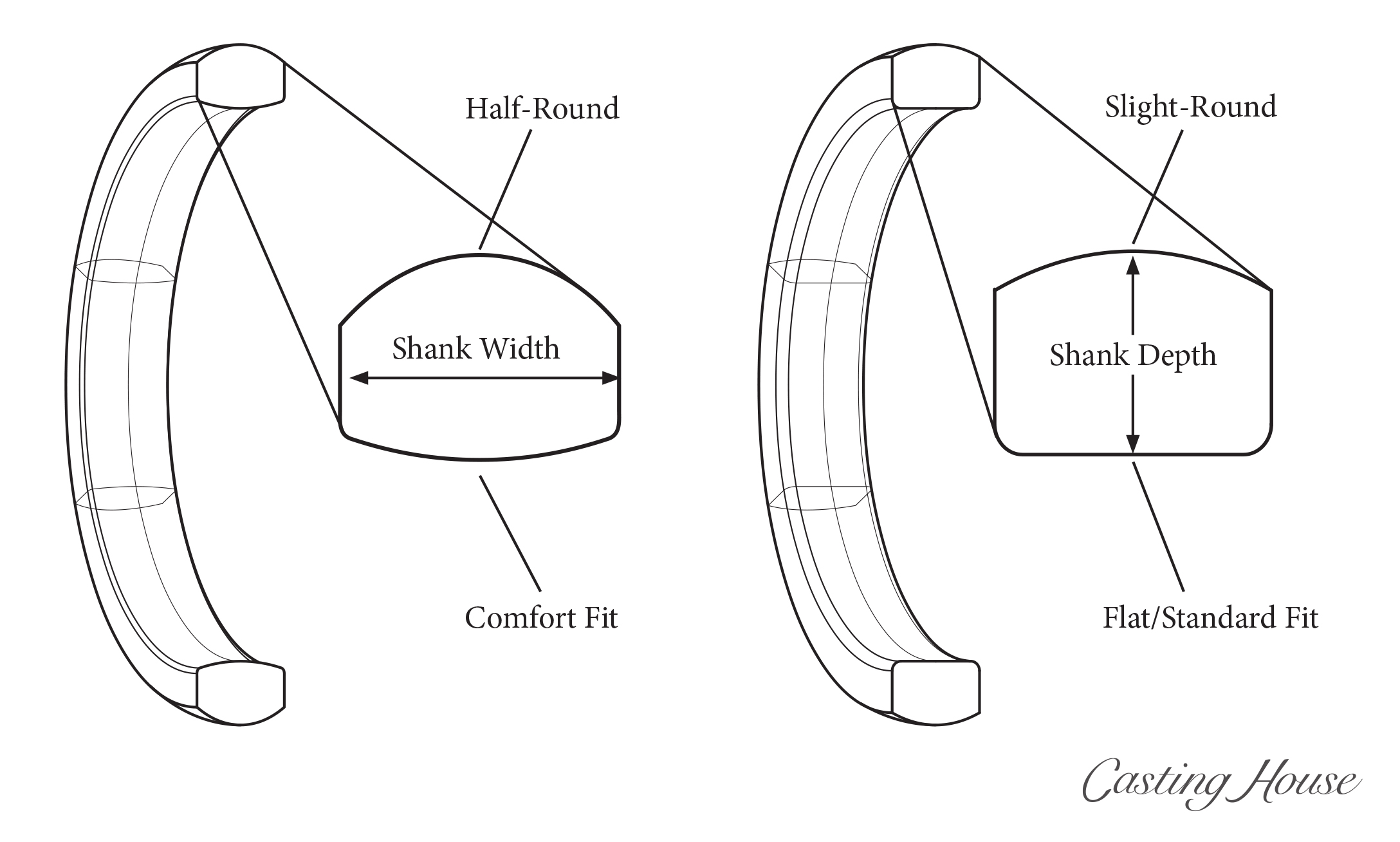
La tige de la bague présente une forme ou un profil extérieur, qui correspond au haut de la tige, à l'opposé du rail de la bague. Deux profils de bague populaires sont le demi-rond et le légèrement rond. L'intérieur de la bague le long du doigt est généralement conçu pour avoir un ajustement confortable incurvé ou un ajustement plat plus droit, également connu sous le nom d'ajustement standard.
Lorsque vous travaillez avec votre représentant Casting House, assurez-vous de discuter de la profondeur et de la largeur de la tige souhaitées ainsi que du profil et de l'ajustement intérieur.
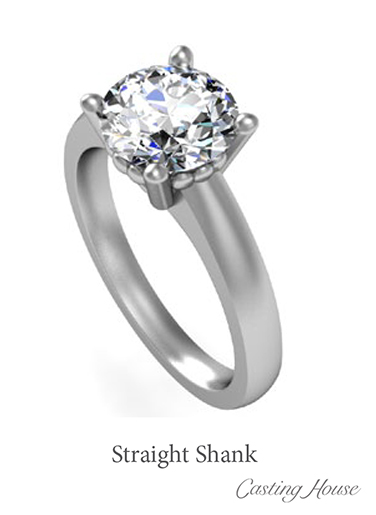
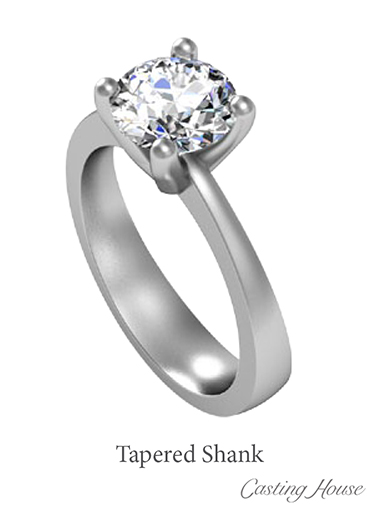
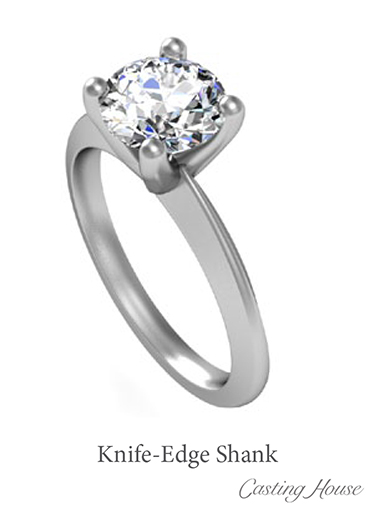
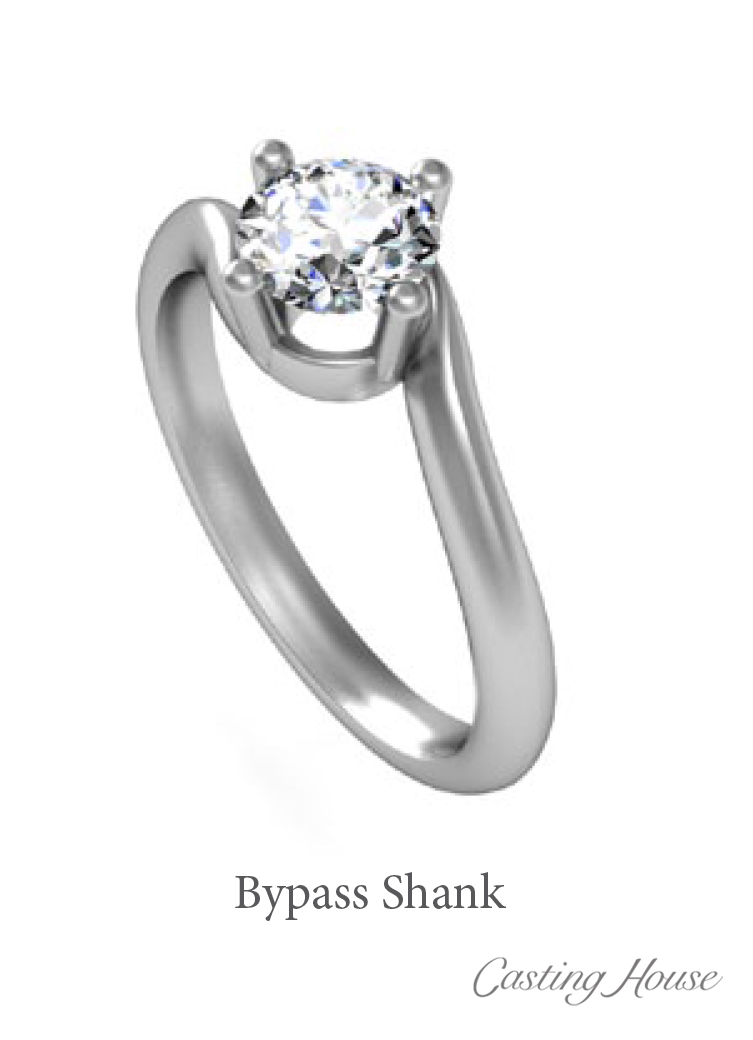
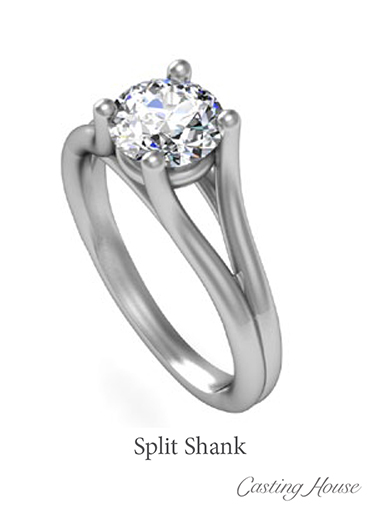
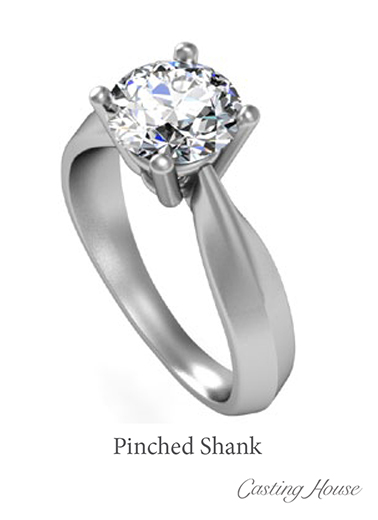
Un style cathédrale – ou cathédrale ouverte – est celui où il y a un espace négatif dans les épaules de la bague, menant au cadre central.
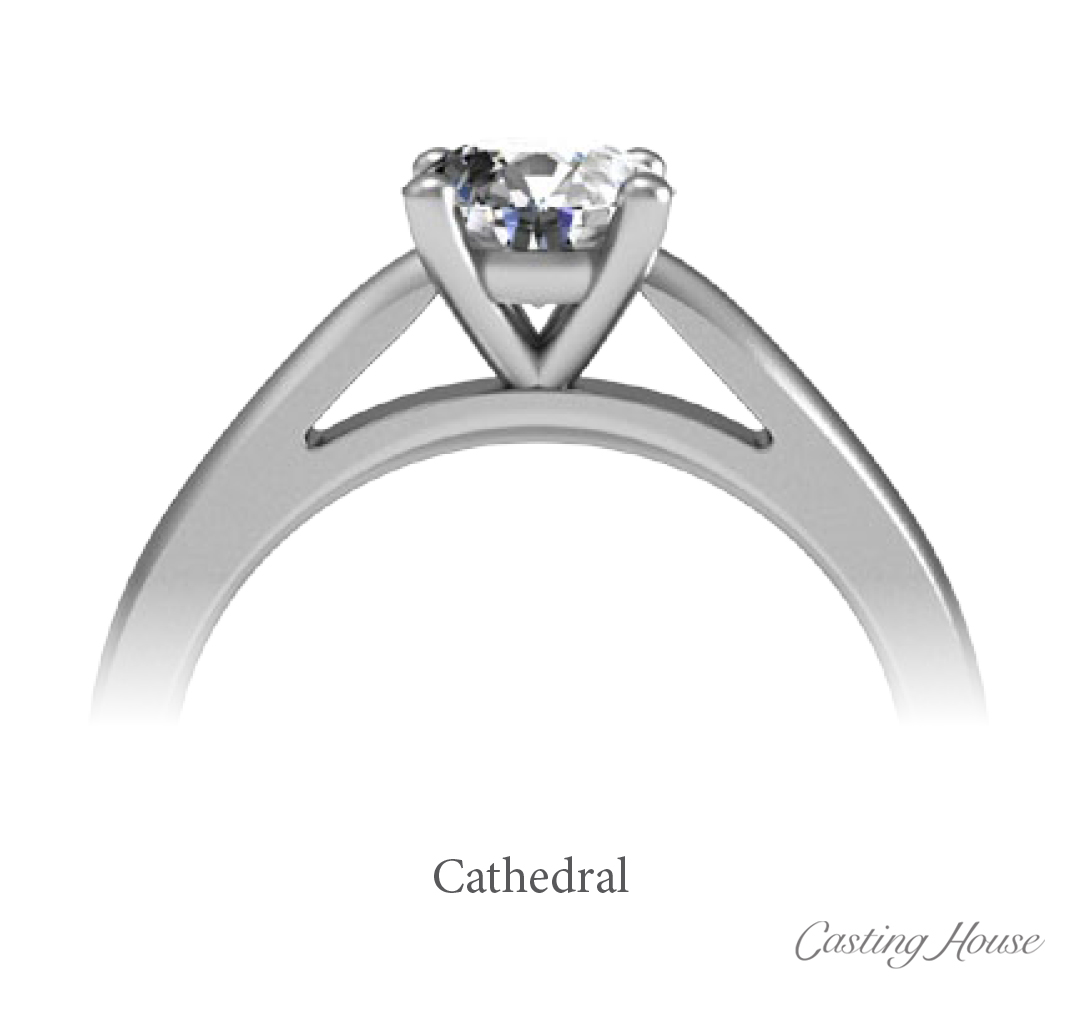
Les modèles à tige européenne se trouvent sur la partie inférieure de la bague, à l'opposé du sertissage central. Ici, la tige est légèrement aplatie.
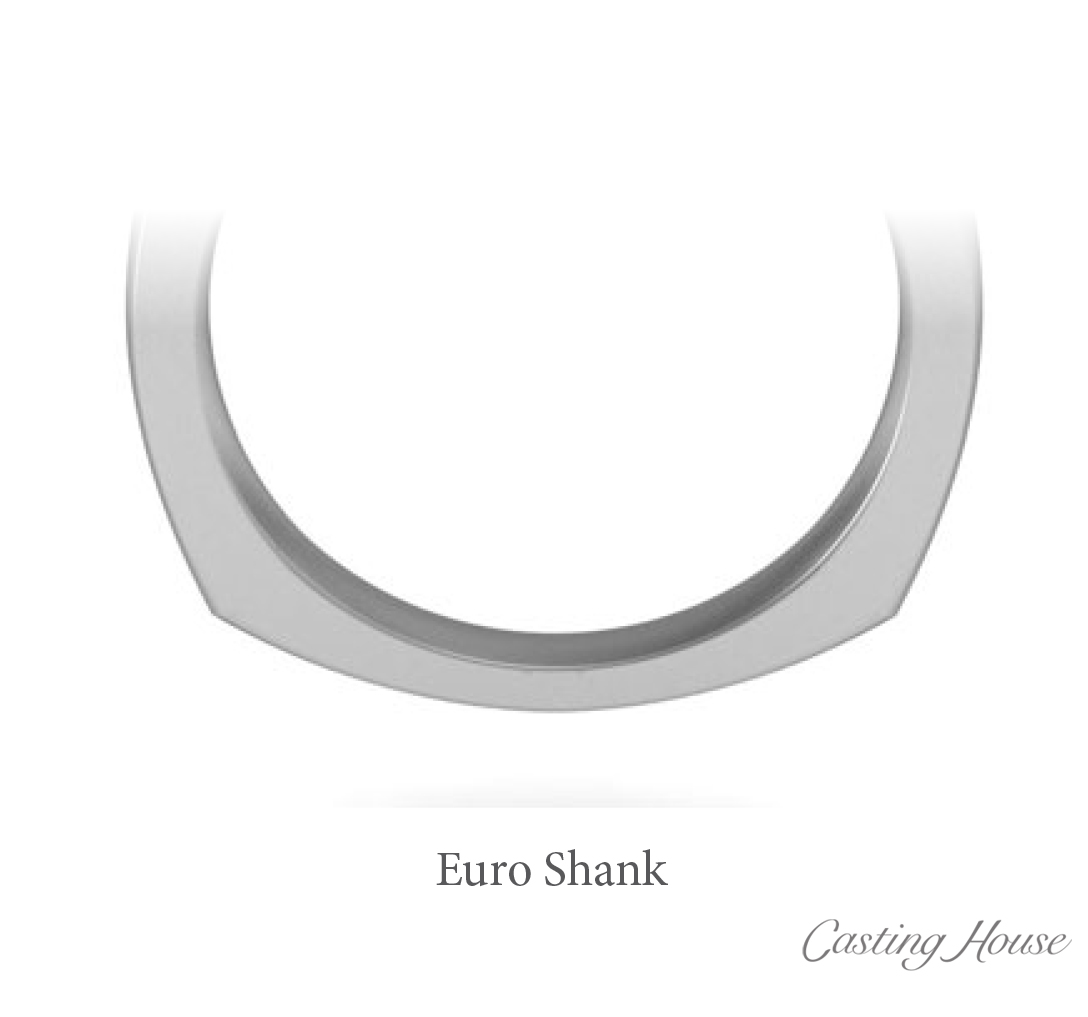
Alliances
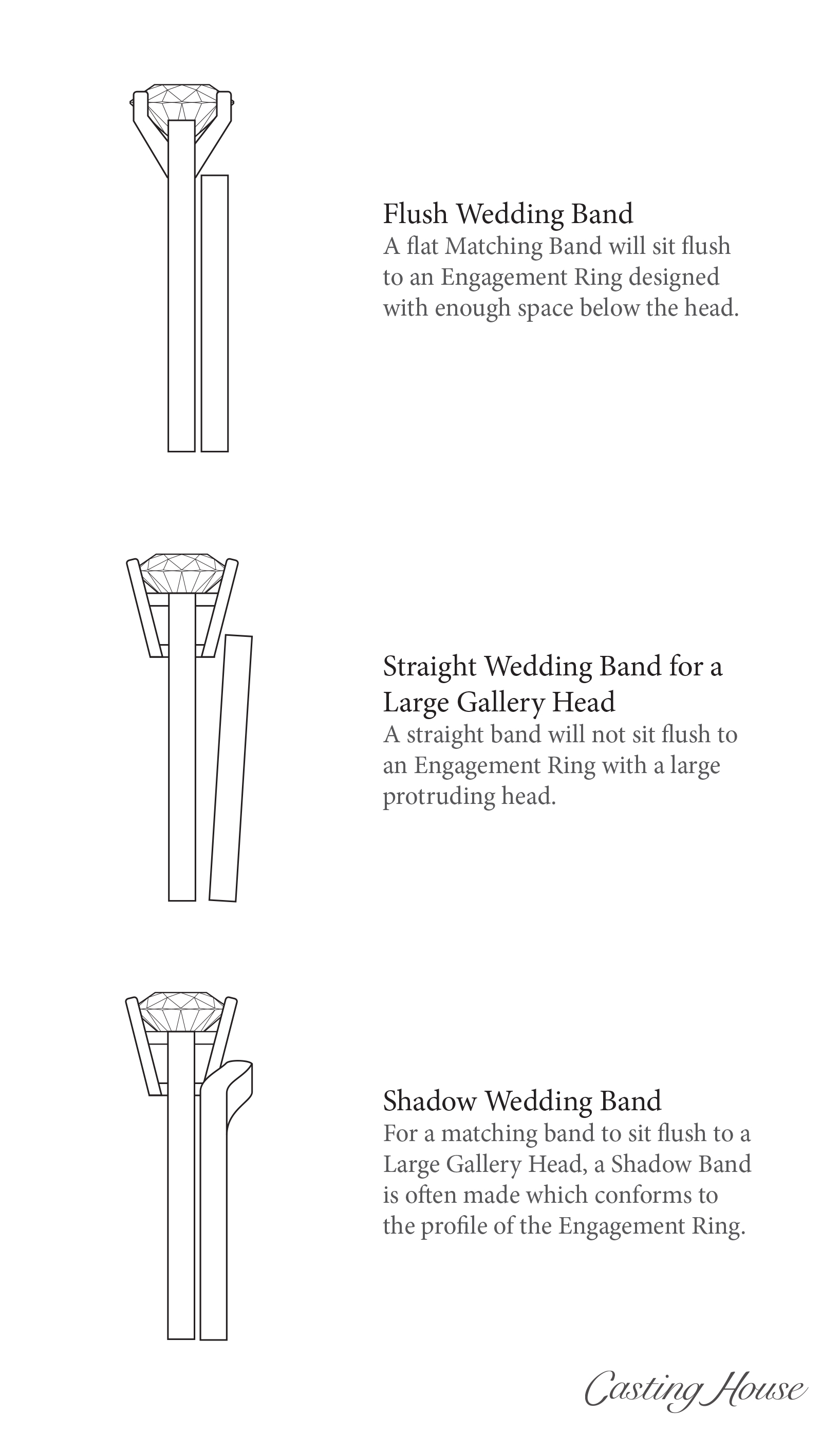
Lors de la conception d'une bague de fiançailles et d'une alliance, il est important de prendre en compte la manière dont votre client souhaite que les deux bagues s'adaptent l'une à côté de l'autre. La plupart des alliances s'adaptent à une bague de fiançailles de l'une des trois manières suivantes :
• Chasse d'eau :
Une bande plate assortie s'adaptera parfaitement à une bague de fiançailles conçue avec suffisamment d'espace sous la tête, entre le rail du doigt et le sertissage.
• Droit, avec un réglage central large ou bas :
Une bande droite ne s'adaptera pas parfaitement à une bague de fiançailles avec une grosse tête saillante ou un sertissage central bas
• Ombre:
Pour qu'une bague assortie soit parfaitement alignée avec une tête de galerie large ou basse, une bague ombrée est souvent fabriquée pour épouser le profil de la bague de fiançailles. Elle fonctionne également bien à côté des bagues de fiançailles avec des motifs de sertissage central inhabituels, tels que le contournement.
RÉFÉRENCE GÉNÉRALE DE DIAMOND MELEE
Le sertissage de diamants et de pierres précieuses est utilisé dans de nombreux modèles de mariée et de bijoux personnalisés pour ajouter de l'éclat et de l'intérêt. Le sertissage peut être utilisé dans les bagues, les boucles d'oreilles, les colliers, les bracelets et presque tous les autres bijoux imaginables. Bien qu'il existe de nombreuses variantes de styles de sertissage de diamants, il est important que toutes les personnes impliquées dans le processus de conception utilisent les mêmes termes afin d'obtenir le résultat souhaité.
Options de réglage de mêlée de diamant (illustrées ci-dessous, en partant du haut à gauche)
- Sertissage délicat en V français : ce style de sertissage est réalisé avec des griffes délicatement fendues qui forment une forme festonnée lorsqu'elles sont vues de côté
- Sertissage pavé : un sertissage spectaculaire créé à l'aide de griffes partagées et de trois rangées ou plus de diamants mêlés placés de manière experte
- Sertissage à griffes de surface : dans ce style de sertissage, de petites griffes partagées sont légèrement surélevées au-dessus de la surface du métal et de minuscules coupes sont réalisées pour les culettes de mêlée
- Sertis à griffes partagées : un style polyvalent, généralement également adapté aux pierres précieuses plus grosses, avec des galeries ouvertes ou fermées
- Sertissage en barre : un style de sertissage élégant qui utilise de petites coupes dans des « barres » métalliques de chaque côté de la mêlée de diamants pour la maintenir en place
- Sertissage de la lunette : un style épuré qui entoure le diamant mêlé d'un petit bord de métal précieux
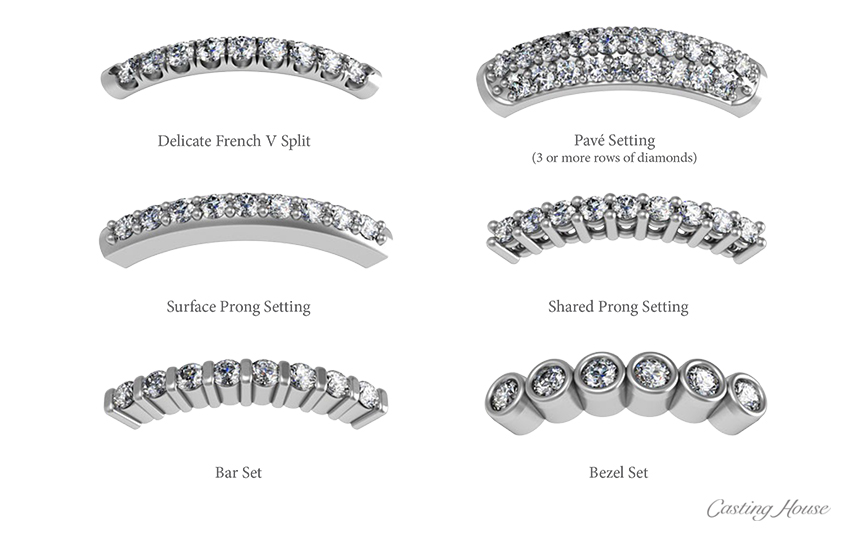
(photo ci-dessous, en partant du haut à gauche)
- Sertissage brillant en perles : il s'agit d'un style de sertissage très populaire et polyvalent, avec des griffes partagées et généralement une paroi latérale légèrement biseautée
- Sertissage festonné : un autre style de sertissage favori, ce sont des griffes partagées délicates qui forment une forme festonnée lorsqu'elles sont vues de côté
- Réglage en canal : un style de réglage classique et épuré où la mêlée est placée entre des parois métalliques encastrées, sans griffes
- Monture en queue de poisson : une monture élégante où le diamant mêlé est placé bas dans le métal avec des coupes délicates en forme de queue de poisson
- Sertissage affleurant : un style de sertissage élégant dans lequel le diamant mêlé est serti individuellement, directement dans le métal et sans griffes
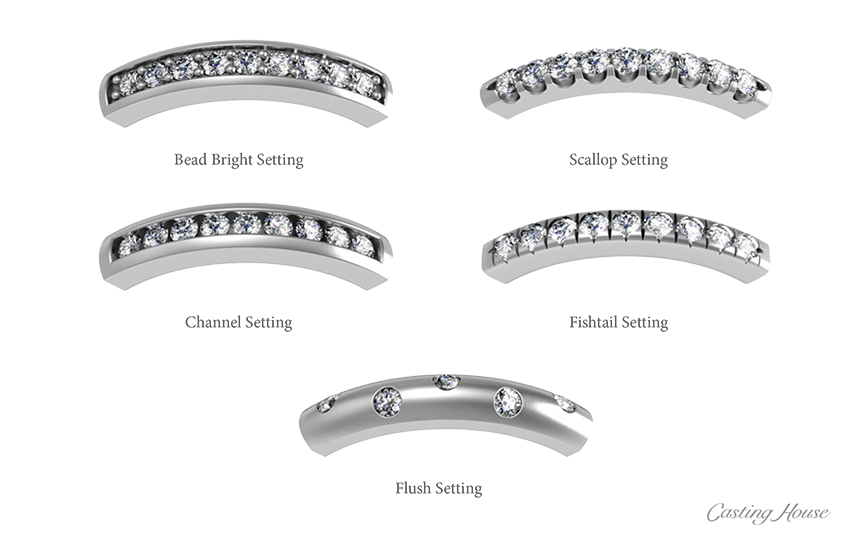
Source : https://www.castinghouse.com/jewelry-manufacturing/diamonds-and-setting.html


































































